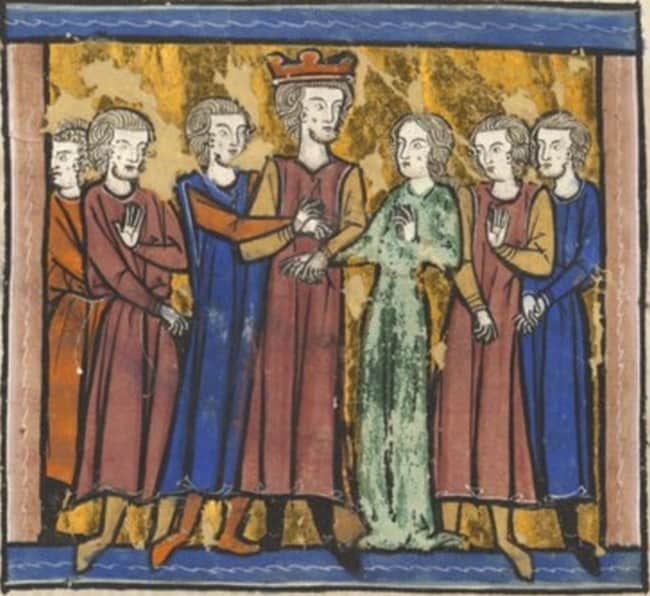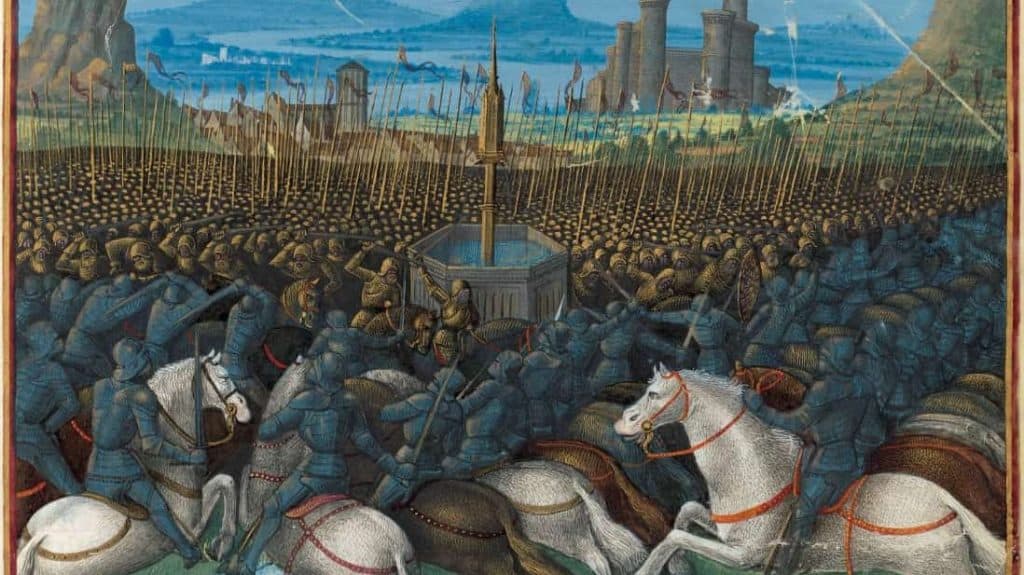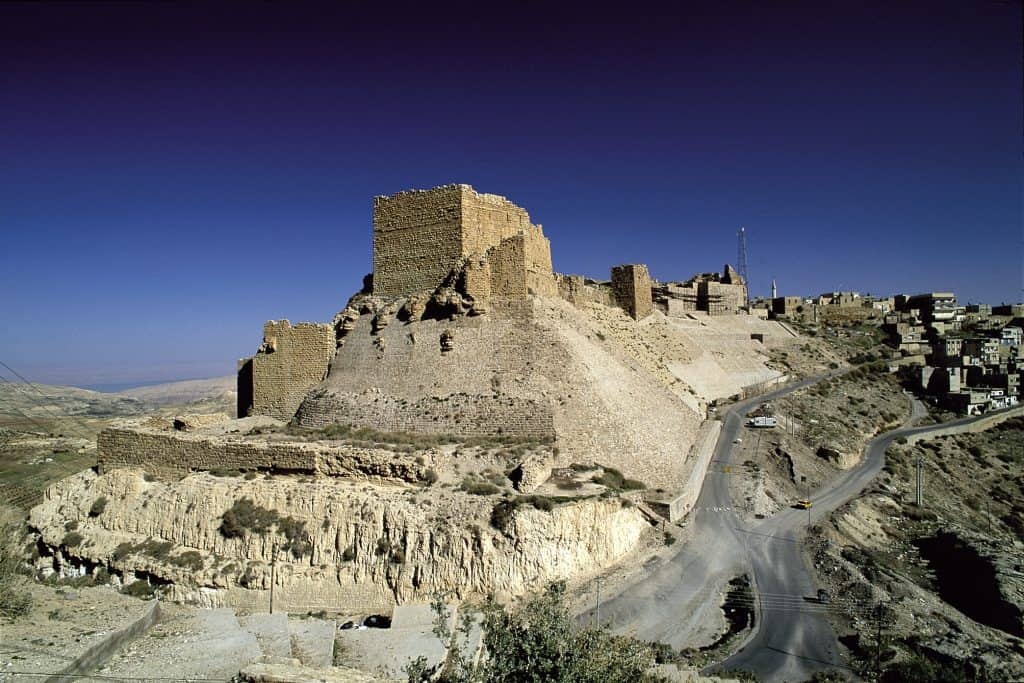Raynald of Châtillon, also known as Reynald or Renaud, was a controversial and prominent figure during the Crusades, particularly in the Kingdom of Jerusalem during the 12th century. His actions and behavior made him a polarizing figure, and his actions had significant consequences for the Crusader states in the Holy Land. Here is an overview of Raynald of Châtillon:
Raynald of Châtillon – Early Life and Background:
Raynald of Châtillon was born around 1125 in the County of Châtillon-sur-Loing, now France.
Little is known about his early life and family background before he became involved in the Crusades.
Participation in the Crusades:
Raynald of Châtillon arrived in the Holy Land during the Second Crusade (1147-1149) and decided to stay in the region.
He became known for his martial skills and was involved in various military campaigns and conflicts in the Crusader states.
Guy of Lusignan

Marriage to Constance of Antioch:
One of the key developments in Raynald’s life was his marriage to Constance of Antioch, the daughter of Bohemond II of Antioch. This marriage gave him a claim to the principality of Antioch.
Actions in the Kingdom of Jerusalem:
Raynald’s actions in the Kingdom of Jerusalem, where he held various positions and titles, were often controversial. He was known for his aggressive and sometimes ruthless approach.
He launched raids against Muslim territories, including attacks on trade routes and caravans, which strained relations with Muslim leaders, particularly Salah ad-Din (Saladin).
Raynald’s actions were a source of tension between the Crusader states and Muslim forces in the region.
Battle of Hattin

Capture and Imprisonment:
In 1160, Raynald of Châtillon was captured by Muslim forces and spent more than a decade in captivity when he became a personal enemy of Saladin.
His release came about in 1176, and upon his return to the Crusader states, he resumed his military activities.
Role in the Battle of Hattin:
Furthermore, Raynald played a role in the events leading up to the pivotal Battle of Hattin in 1187.
In addition, his actions, including the harassment of Muslim pilgrims and the capturing of a caravan that included Saladin’s sister, contributed to the rising tensions between the Crusaders and Saladin’s forces.
Moreover, the defeat of the Crusaders at the Battle of Hattin, in which Raynald fought, resulted in the capture of Jerusalem by Saladin.

Credit: JoTB, CC BY-SA 3.0, via Wikimedia Commons
Death:
Lastly, Raynald of Châtillon’s death came at the hands of Saladin. After the Battle of Hattin, he was executed personally by Saladin in 1187, who was said to be seeking revenge for Raynald’s past actions.
Legacy and Controversy:
Furthermore, Raynald of Châtillon remains a controversial figure in Crusader history. So, while some view him as a bold and daring warrior defending the Christian presence in the Holy Land, others see him as a reckless provocateur who played a role in destabilizing the region and escalating hostilities with Muslim forces.
In conclusion, Raynald of Châtillon’s life and actions exemplify the complexities and challenges faced by the Crusader states in the Holy Land during the 12th century. Ultimately, his controversial behavior and military adventures impacted the Crusades and the relationships between Christian and Muslim forces in the region. More about him on Wikipedia!







